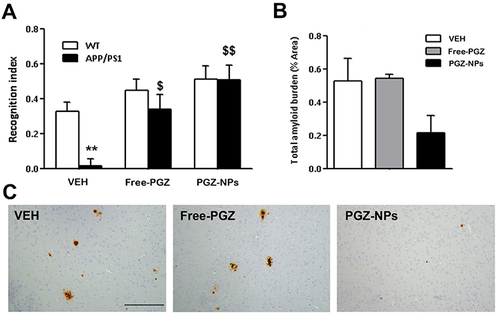Silva-Abreu M, Calpena AC, Andrés-Benito P, et al. Int J Nanomedicine. 2018;13:5577–5590.
In the published article, there was an error in Figure 6A on page 5585. The image for Rhod-NPs was duplicated by a mislabeling of the image files. A new image for Rhod-NPs has been updated (bottom right). The authors apologize for this error and state that this does not change the quality and scientific conclusions of the article in any way.
The correct Figure 6 is as follows.
Figure 6 (A) Images of PGZ-NPs and Rhod-NPs by TEM after 6 hours in the basolateral compartment. (B) Permeability of hCMEC/D3, following exposure to 1 μg/mLof NPs for 6 hours. TNFα+ IFNγ (10 ng/mL, for 24 hours) was used as a positive control, increasing endothelial permeability.

In addition, an error by the journal during the preparation of Figure 7 led to the inadvertent creation of duplicate regions in Figure 7C on page 5586. The journal wishes to apologize for this error.
The correct Figure 7 is as follows.
Figure 7 In vivo evaluation of PGZ-NPs.

